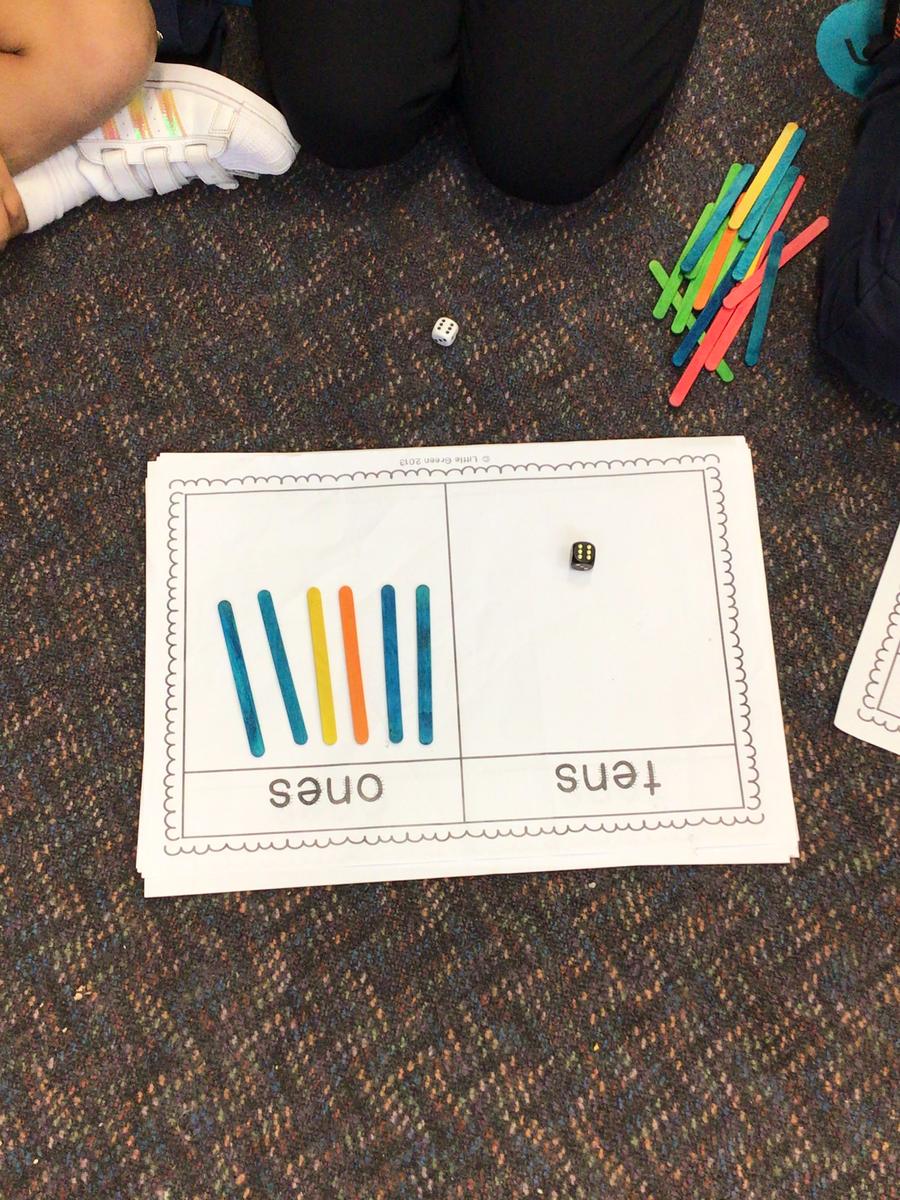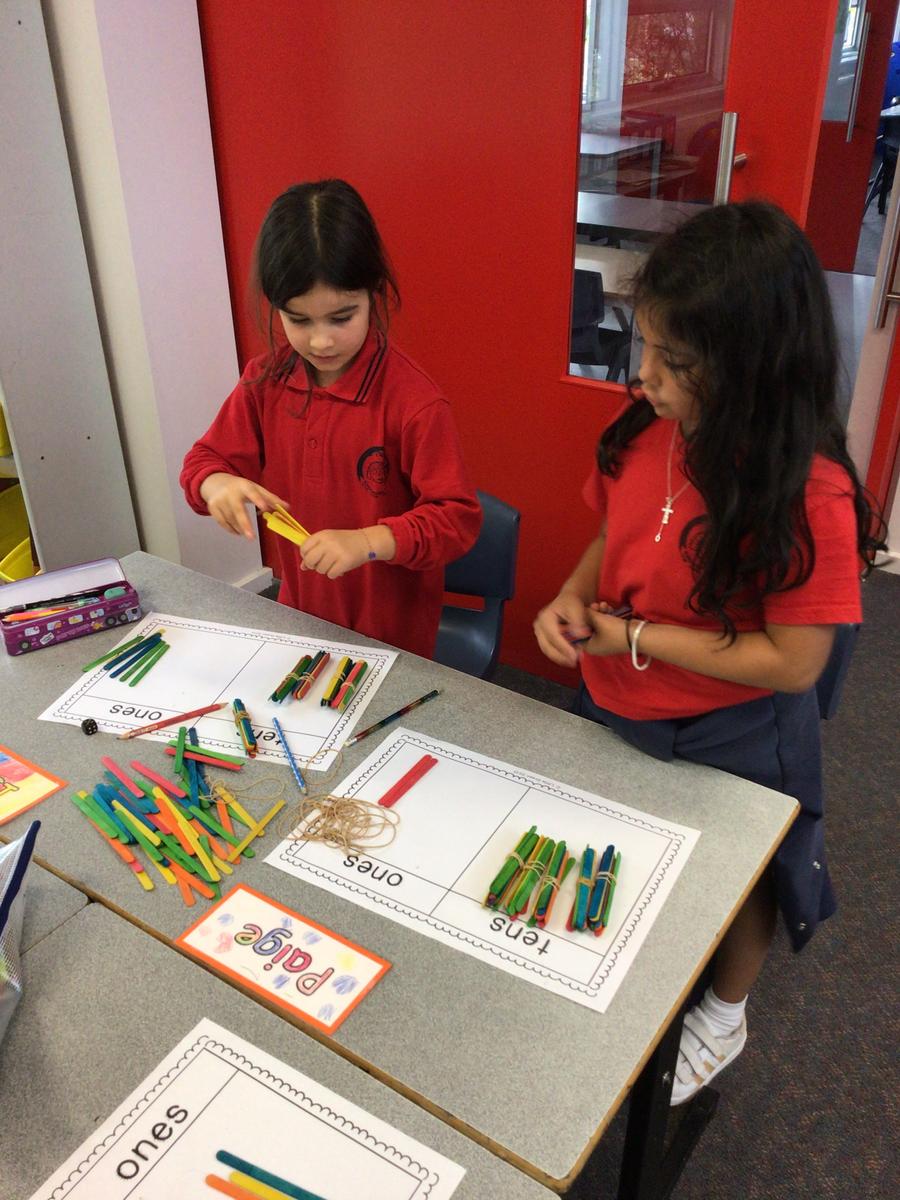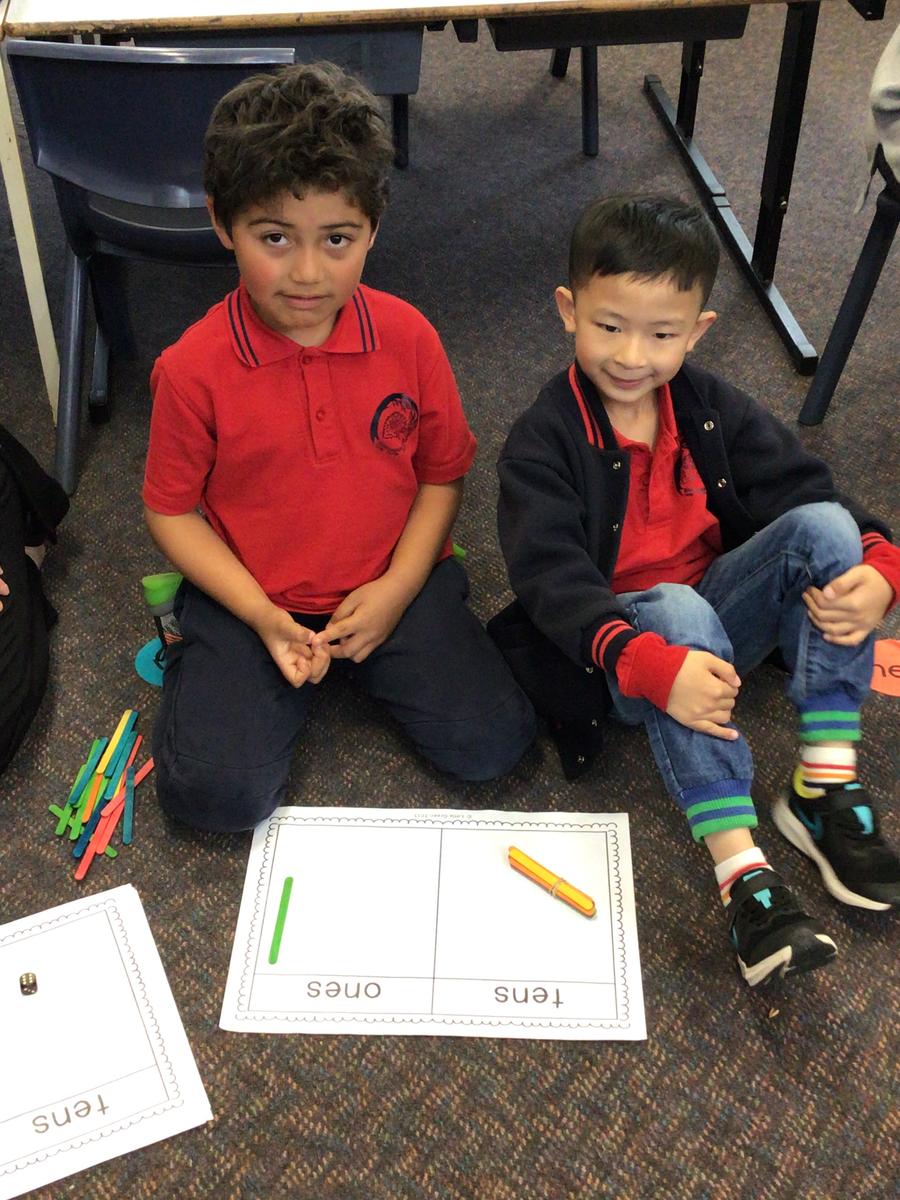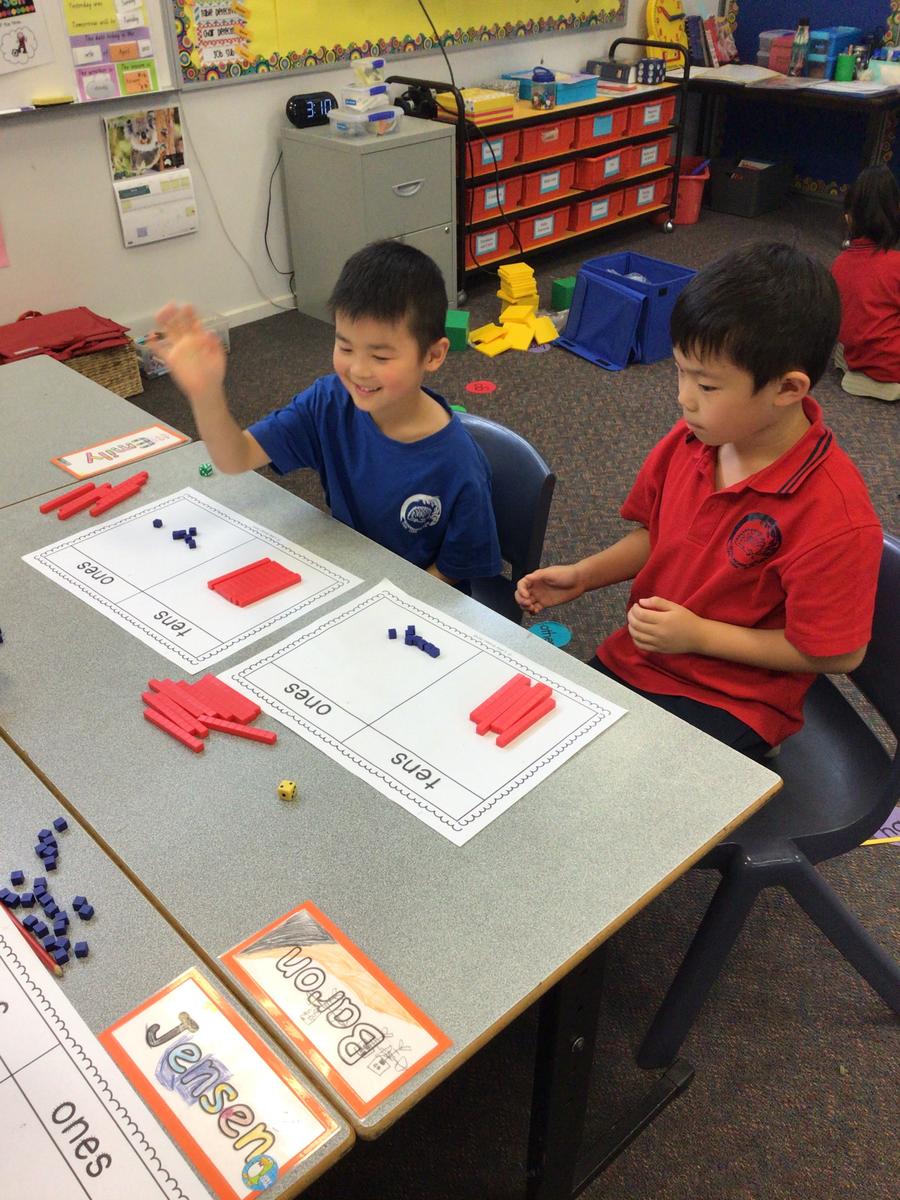From the Team 1/2 classrooms:
Mrs Simone Draper

From the Team 1/2 classrooms:
Mrs Simone Draper
Students in Grade 1 & 2 have recently been learning about Place Value during Maths lessons. Number and Place Value is a sub strand of Number and Algebra within the Victorian Curriculum and Assessment Authority framework. Students learn to partition numbers and count collections to 100. Once this skill is mastered they work towards larger collections of 1000 or more. Students are learning that numbers are named according to their size and value. They consist of numerals which are represented by a digit in the place of units (ones), tens, hundreds or thousands. Students benefit from using hands on materials such as bundling icy pole sticks with elastic bands (also great for fine motor skills) as well as the more formal model of MABs (Base 10 Blocks) to demonstrate the relationship between the size and value of each number. This combined with other topic specific resources such as Place Value Mats and Thinkboards help students build numbers to see their size and value developing an understanding between the different digits. Students can see that 3 units look very different to 3 tens or 3 hundreds or 3 thousands! To see what this looks like, please check out some photos from our classrooms!








GAME: RACE TO 100
To play Race to 100, you will need a large number of icy-pole sticks, elastic bands and a card divided into two columns with the headings ‘Tens’ and ‘Ones’.
Players take turns to roll a die and pick up sticks to correspond with the number. These sticks are placed in the ‘Ones’ column. (Explain that there must be no more than nine sticks in the ‘Ones’ column). When ten sticks are collected, the player must put a rubber band around the bundle, which then goes in the ‘Tens’ column. The game continues until a player reaches 100 or more.
Don't have icy-pole sticks? You could try replacing them with pegs, skewers, cotton tips, straws, or small sticks from the garden with hair ties, loom bands, pipe cleaners or bag ties (the twist variety).
100 SQUARE JIGSAW PUZZLES
Another fun activity is to print off a 100 square and cut it into different shapes so children can puzzle piece them back together. You can help your child make connections by counting in 1s or 10s, looking at the place value of ones, tens and hundreds and seeing if the numerals repeat. You can discuss direction including horizontal and vertical and measurement including columns and rows.